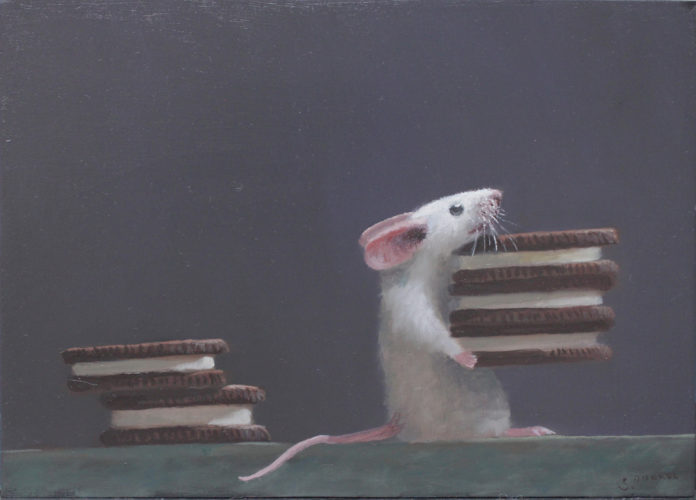Oil painter Stuart Dunkel shares his breakthrough moment in art, his process, his palette, and a step-by-step still life painting demonstration.
It’s All About the Idea: Creativity Versus Rational Conspiracy
BY STUART DUNKEL
My still life paintings are autobiographical. They reflect and explore issues in my life. I like to transpose my philosophical ideas into the creation of still life, animal, and landscape paintings. I cherish the teachings and procedures of the old masters, especially the Dutch painters, and encourage my students to explore and continue with these rich traditions. I seek to achieve strong, balanced, and interesting compositions, using movement to lead the viewer through my work. Looking at my art, I would like a collector to find a secret place within them where they discover the knowledge and truth of joy, optimism, humor and playfulness, as well as a sense of classical balance and beauty.
Being a painter, musician and author, sight, sound and words are the tools of my expression. I began painting at age five and at age seven I began studying music. The very discipline of formal training has always appealed to me and I have dedicated my life to the in-depth study of them. I studied music and art at Boston University, Mannes College of Music, the Juilliard School (Doctorate), and art at the Boston Museum School, Kent State, and The Seattle Academy of Realist Art as well as privately with respected teachers.

My breakthrough moment in art was when it was revealed to me that music and art were made up of the same ideas. Conceptual juxtaposition has always been my gift. (I try to balance my left and right brain, yet the right side seems to always win!). Rhythm, harmony, counterpoint, balance, contrast, scales, chromatism, keys, high and low, dark and bright, loud and soft, colorful and dull, jumbled in my minds eye – all the polarities in the arts and indeed in life itself! I have the ability to think of a scene or object and project it on my minds screen and then draw and paint from it.
Major influences have come from the Netherlands artists between 1550 and 1720. Their clarity of image and beauty have inspired me my whole life, in particular, Kalf, De Heem, Heda and Claesz. My early works were Dali inspired and taught me that creativity is that place inside that ideas mingle, collide, and create new ones. The past meets the future on the inner screen between the eyes where reality and fantasy collide
I usually enjoy the darkest of backgrounds in my still life paintings as it affords the eye the most comfortable place to perceive reality at its beginning. The great Netherlands artist of the 16th century knew this, and many of the most beautiful images are set against a blackish backdrop. This perception enforces my belief that nothing exists until light is draped over it. From the nothingness of black we build up to the perceived objects. As in love, we create the feeling the other inspires in us. As in art, we create the feeling to inspire the others in us. In other words, we must think of the consequences of our actions and what results each brushstroke and image communicates.
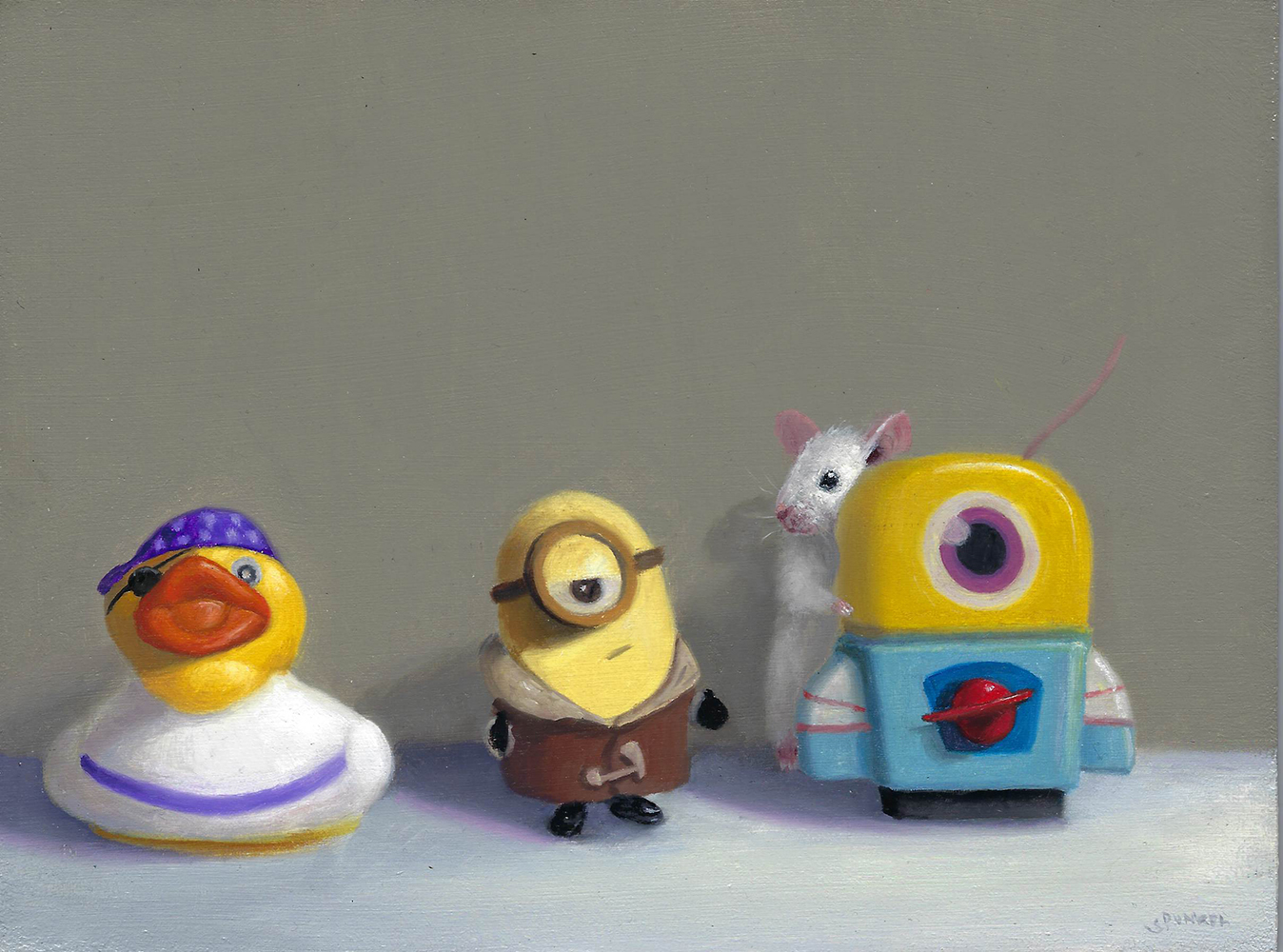
My Work and Process
My brain was split in half when I was born. My mother’s half is creative, intuitive, and imaginative. My father’s half is logical, resourceful, and focused. I inherited both sides, and each side offers a different perspective. When the creative side fails me, I turn to the logical side. When I can’t figure something out, I rely on my imaginative side.
Ideas pop in either through intuition or internal dialog. I defer to Stu, Stuart, and my observer. Stu is my intuitive, imaginative, fantastical, nonlinear process. Stuart is my linear, logical problem-solver. The observer is the eye that receives and notes what’s observed. I have notebooks full of ideas and compositions, and an “obsessive motif,” a subject that I keep exploring. That subject is the mouse, even though I also paint landscapes, still life, and other animals.
Over the years I’ve collected objects that I am attracted to — scales, marbles, coffee containers, chess pieces, fake flowers, fake fruit, fake vegetables, articles of war, weird boxes, toys, candies, cookies, marbled eggs, pipes, teddy bears, penguins, and weird musical instruments. After finding the object I like or want to explore, I figure out how the mouse fits into the story. To do this, I slip into my two modes, either I go “unconscious” or “conscious”.
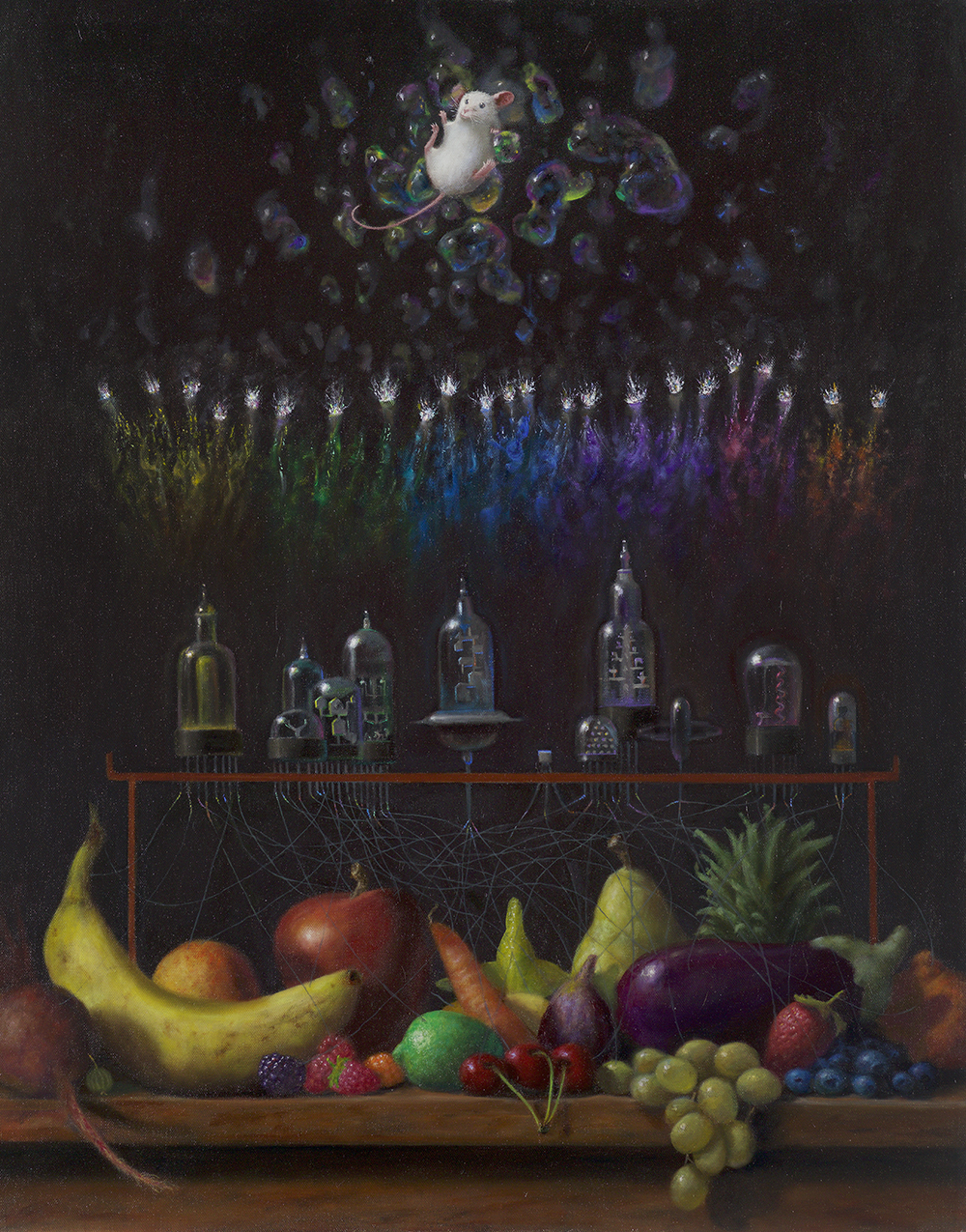
Here’s how it works for me.
I have a dark screen in my mind’s eye where I project an image, make it three-dimensional, and hold it there so I can paint it. From my intuitive side the image comes first, then the words, and then the image on the screen. From the logical side the thoughts come first, then the pictures, and then the image on the screen.
Question: How do I figure out what to paint for “Stu,” who is right-brained and “Stuart,” who is left-brained?
“Stu’s” answer: In your unconscious choose a picture that intrigues you; hold it clear and bright, open the sensorium. Let hopes, failures, and dreams flood in. It’s a movie based on the object showing on the screen. It’s a story, a scene that is pregnant with intent. Guide the object toward your challenges, obsessions; then merge and jumble them with an emotion, wish, or desire. Open the void and let the information or images fall in.
“Stuart’s” answer. Juxtapose concepts by selecting unrelated objects then identifying a kernel of commonality.
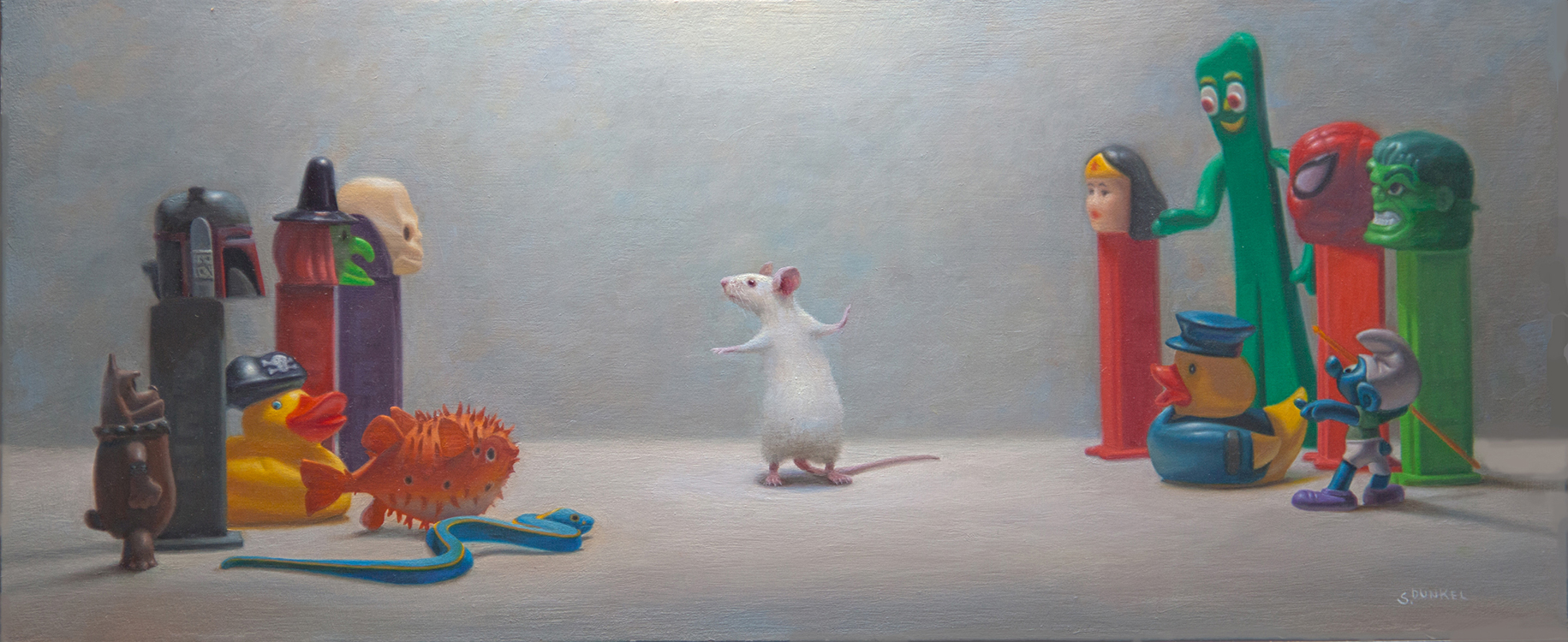
I can think of various ways to project an image on the screen. Here are a few of my personal techniques.
- Fibonacci. I use the golden ratio to balance the color scheme, values, differing sizes of shapes, and placement of positive and negative shapes. The acceptance of mathematical patterns of three gives me a perspective that can predict life’s uncertainties. The philosophy of thesis, antithesis, and synthesis has resonated with me throughout my mature life. The relationship between object and subject forms the culmination of the emotional basis of the painting.
- Musical composition. My first career was as a classical oboist where I played in symphony orchestras. Playing the same pieces year after year, I sought to inject new interpretations for each concert. In painting, I think of how I can vary certain elements in a similar painting and create a new one. In music there is a form called theme and variations where a main motif is subjected to changing rhythms, meters, key changes, and additional compositional devices. It works for creating art also. All the components of music can be transposed into art.
- Stanislavski acting method (I studied acting while getting my doctoral degree at Juilliard). I find a subtext or an emotional undercurrent to connect the situation and subject. I am an actor making the characters come to life.
- Movie-making. I pretend I’m a filmmaker who is trying to make a statement on an issue. I start the movie of what I want to paint and when I hit a certain scene I paint it.
The random spinning of three wheels. When all else fails, I think of a wheel with all the subjects I like to paint. I spin the wheel and whatever shows up I use it as the object in a painting. The second wheel is the gesture of the mouse. The last wheel is the feeling I want to impose on the scene. I put them all together and create a painting.
Starting the Still Life Painting
I start my paintings in one of three ways:
- Tiling. I place one shape, tone, and color next to each other and then blend the tones together.
- Mid-tone. I mass in an object in a colored mid-tone and then add lights and darks.
- Grisaille. I cover the panel with a raw umber and then wipe out the lights and add the darks to create a value underpainting.
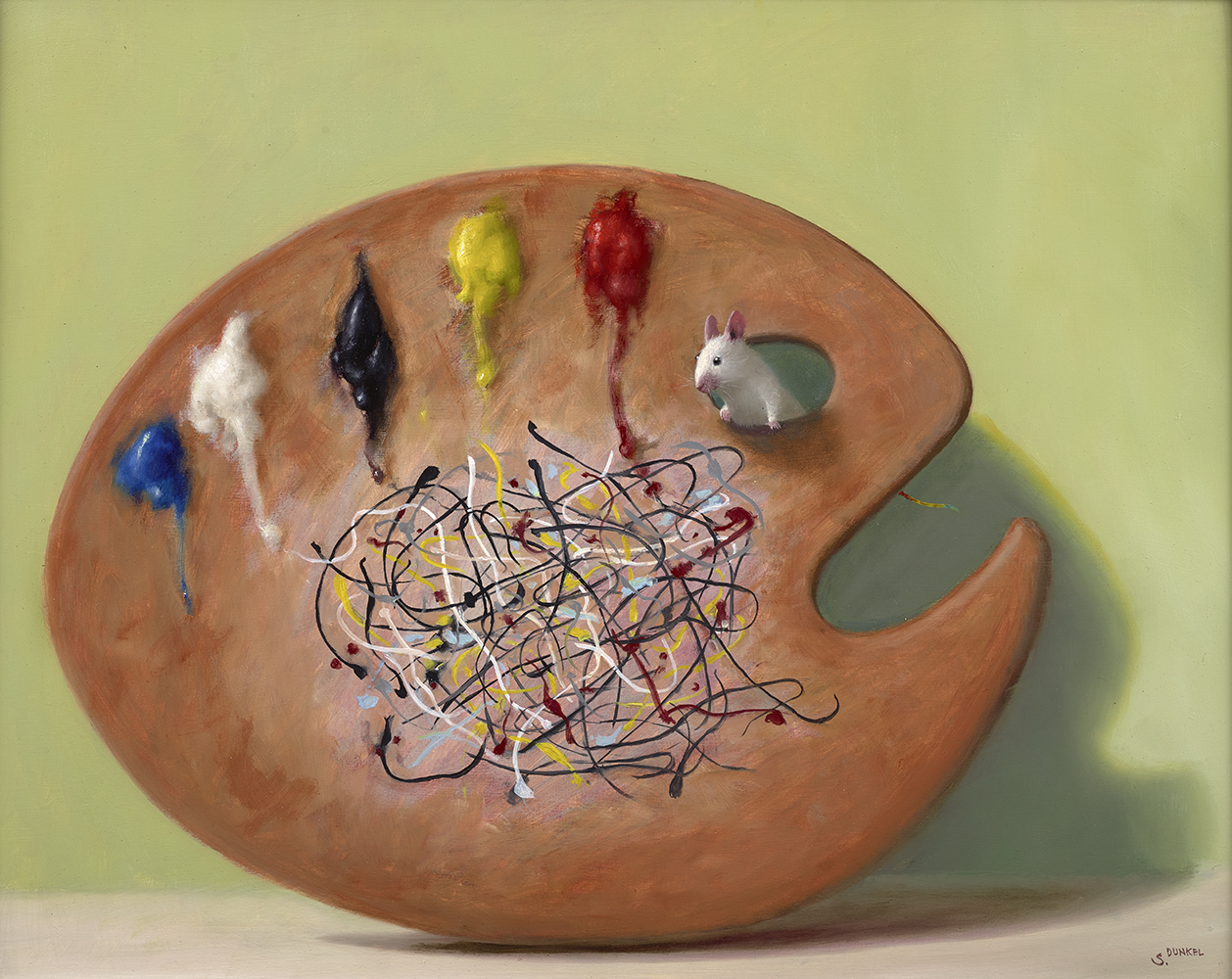
My Palette
I like to use the most opaque colors oil paints allow. That way I can paint in one layer and get on to the next idea and painting.
I create my own colors based on a composite that I see of each color in nature based on the primaries.
Red. I use a combination of caput mortuum and alizarin crimson. The opaque nature of the caput makes the alizarin more manageable. I call this color Dunkel alizarin and tube it up.
Yellow. I use mars yellow as a base and add cadmium yellow pale as an average yellow I see in nature.
Blue. I use a combination of Mayan blue (a clay-based oil paint) and Prussian and ultramarine.
White. I use alkyd pro titanium, the most opaque white I can find. I sometimes mix it with mussini titanium white and tube it up. Both are very opaque.
I create a mother-color, called my god-color, based on a synthesis of all the colors found in nature and use it in combination with the backgrounds I use. In addition I’ll use transparent oxide brown, mars black, cadmium red light, and Corbett green (Williamsburg paints) if needed.
For a medium I use liquin and Italian wax medium. I like Sceptre gold round brushes and Utrecht flats and mop brushes by Trekell.
In conclusion, the process of inventing a new image for a painting is multi-dimensional. Every artist has their own process of creating art. My process involves an introspective tour of my brain as it works to create images. That’s the part I like the most about my painting adventures.
“Juggler,” A Still Life Painting, Step by Step
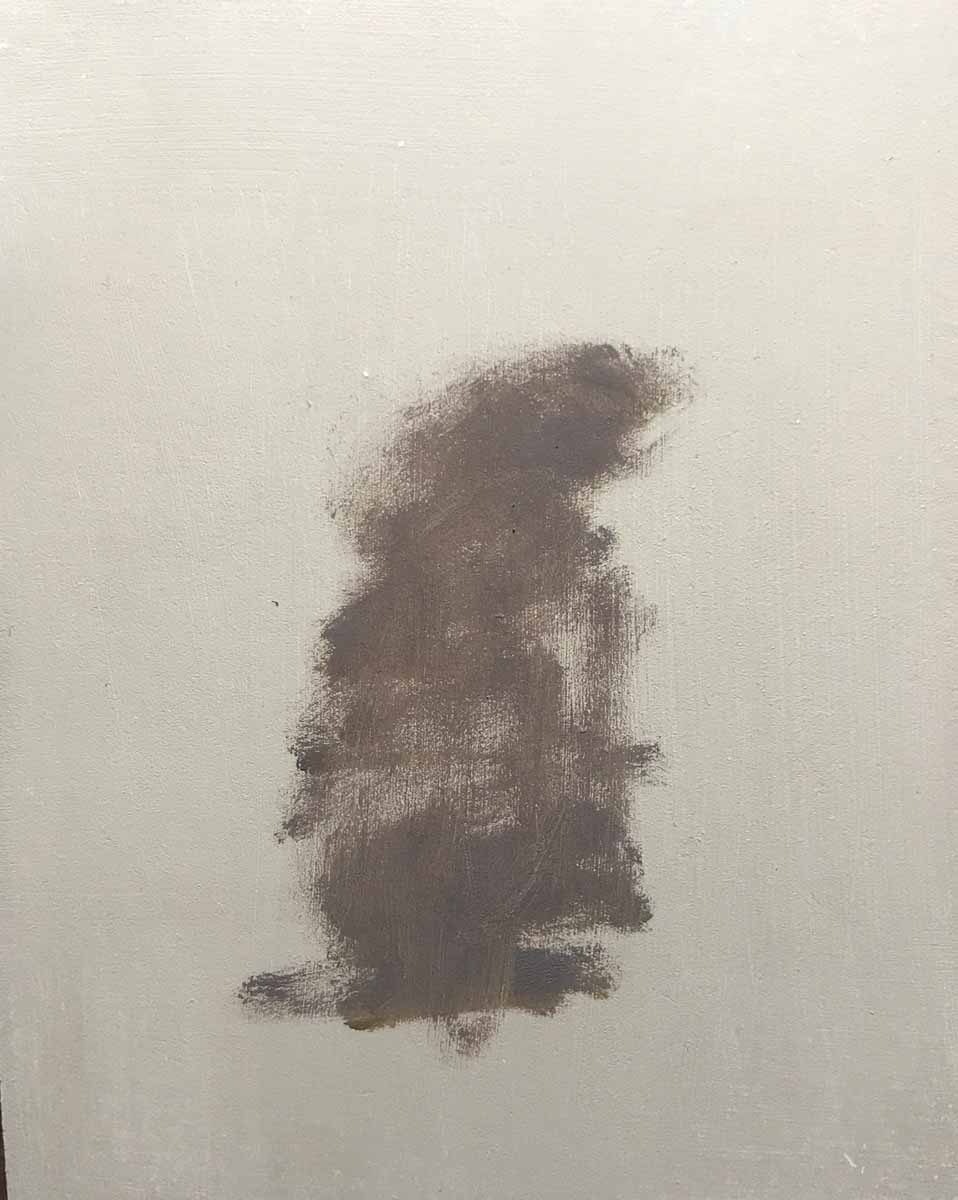

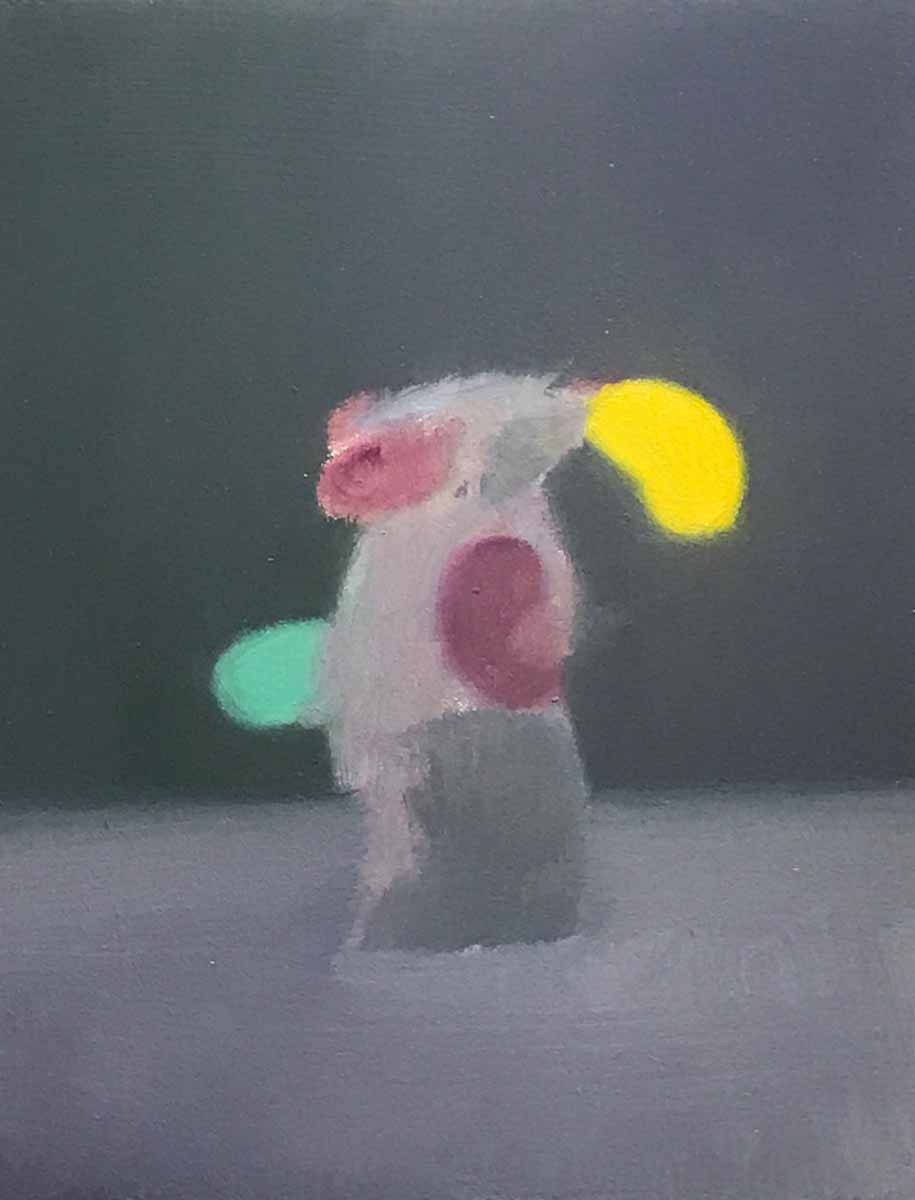
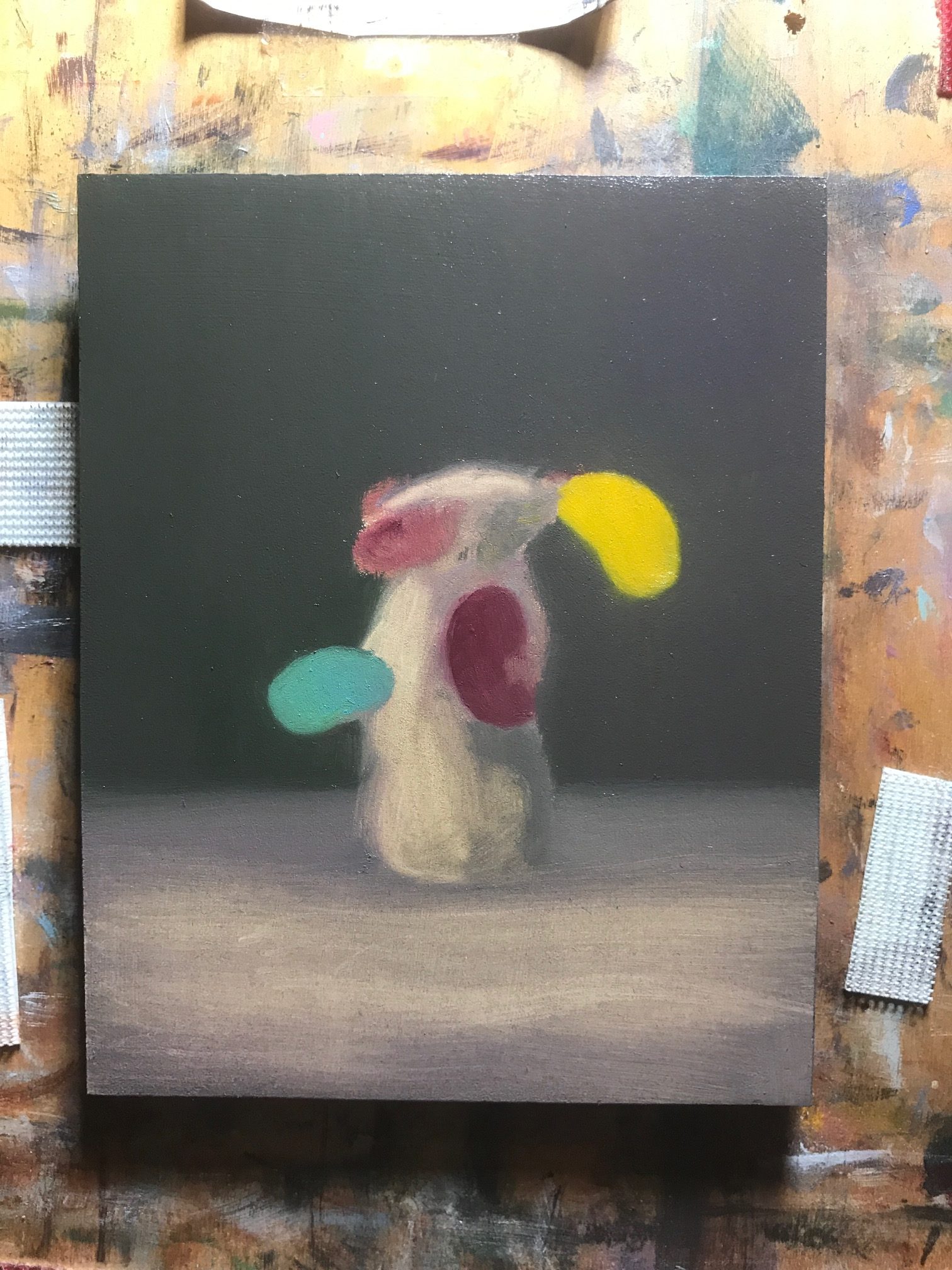
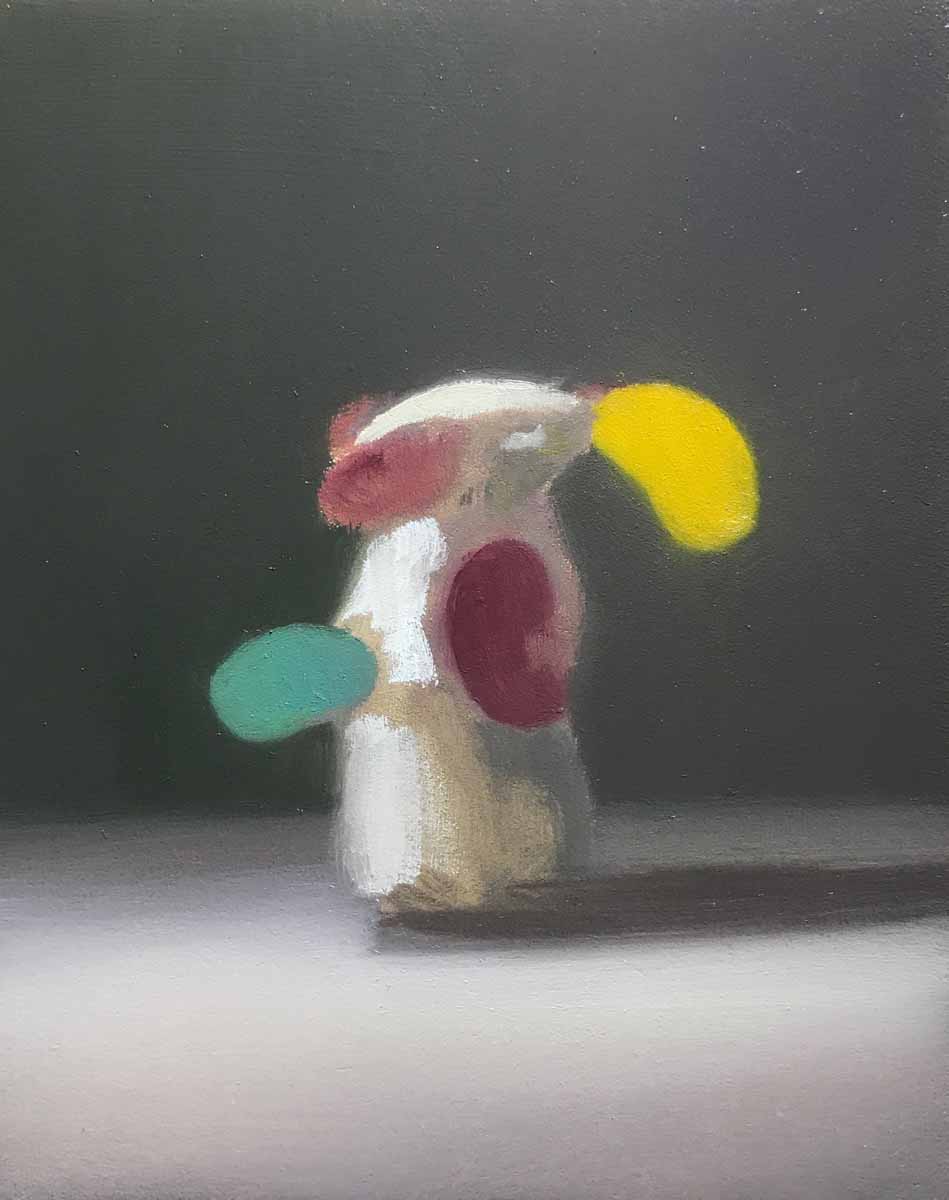
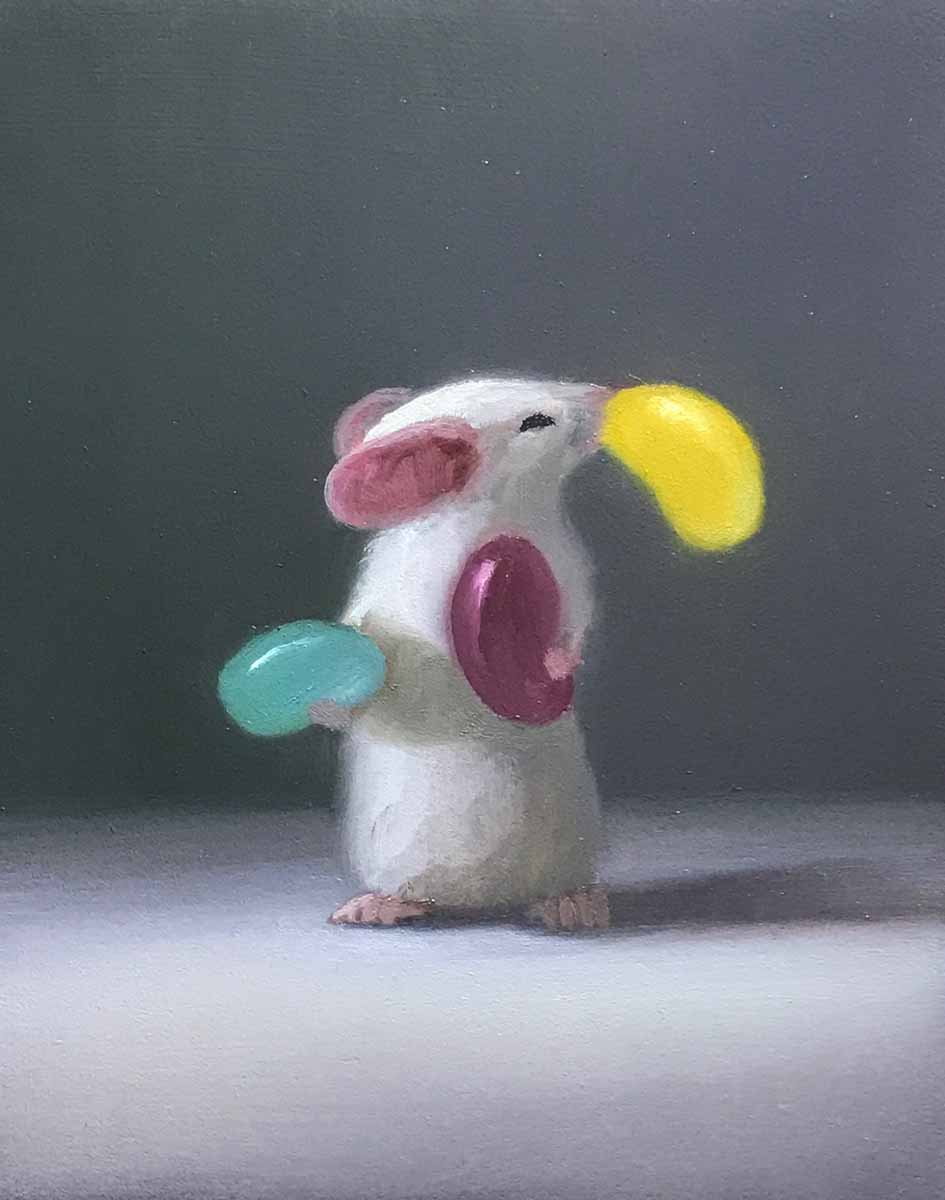
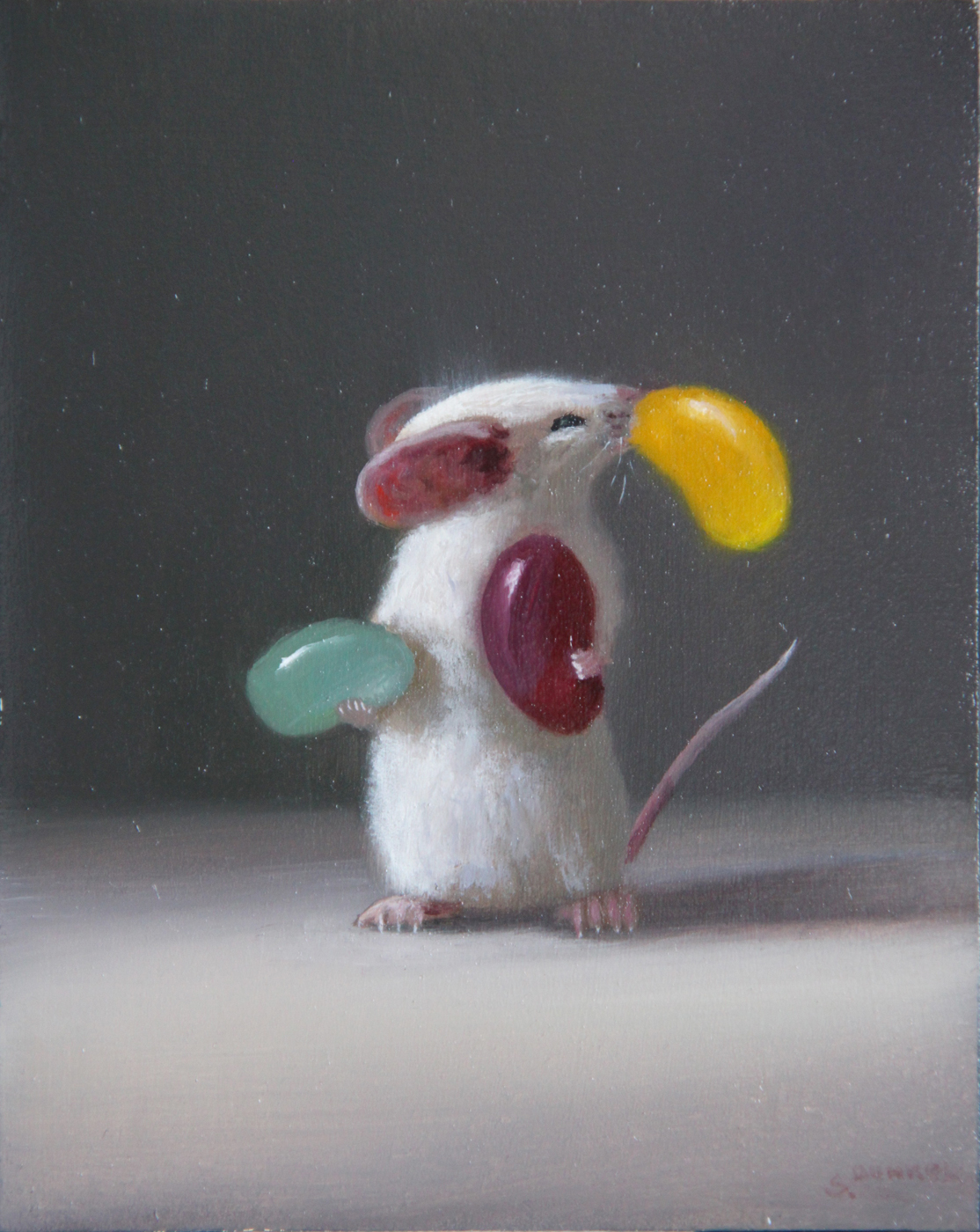
About the artist
Stuart Dunkel (www.stuart-dunkel.com) was born in Fair Lawn New Jersey in 1952 and currently lives in Boston. He began painting and playing classical music at age five and went on to a long career with top orchestras in Boston, New York, and Hong Kong. In 1994 he transitioned from music to fine art where he received his classical training at The Boston Museum School, The Academy of Realist Art in Seattle and Private Study with Ani Graduate Joel C. Jones.
As a contemporary realist, Stuart likes to paint still life, landscape, and animals. He especially likes to paint comical still life scenes with a mouse interacting with an object. He hopes a viewer will find joy, optimism, humor and playfulness, as well as a sense of classical balance and beauty in his work.
His paintings reveal that music and art are made up of the same ideas. Rhythm, harmony, counterpoint, balance, contrast, scales, chromatism, keys, high and low, dark and bright, loud and soft, colorful and dull, can be found in his compositions.
Stuart is Director and teacher of THE NAUTILUS SCHOOL OF REALIST ART in Watertown, MA and is invited to do many demonstrations and workshops. He is a member of The International Guild of Realism, The Art Renewal Center, and the Copley Society of Boston and has won awards and been invited to show at The Guild of Boston Artists, The Copley Society of Boston, The Salmagundi Club, along with other groups and galleries. He paints everyday with his dog, cat, and 3 whites mice in his studio.
> Visit EricRhoads.com (Publisher of Realism Today) to learn about opportunities for artists and art collectors, including:
- Art retreats
- International art trips
- Art conventions
- Art workshops (in person and online)
- And more!


